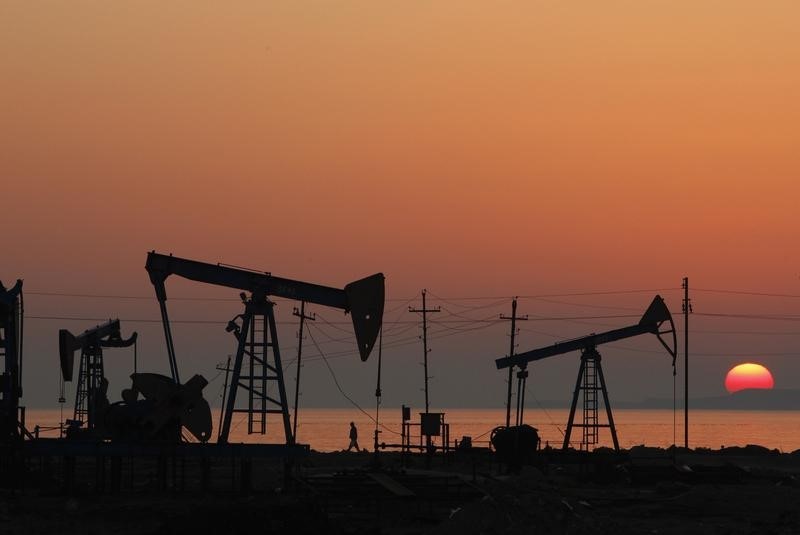Investing.com -- Oil prices rose in early Asian trade on Thursday, vying to snap a three-day losing spree amid potential supply disruptions in Iran and Russia, although fears of weakening economic growth and demand kept sentiment dim.
Crude prices plummeted to near 17-month lows over the past three sessions as traders grew more fearful of a U.S. recession this year, which could severely crimp demand. This was capped off by a warning on the economy from the Federal Reserve, as well as an interest rate hike on Wednesday.
But potential supply disruptions in Russia and Iran, along with a further tightening in U.S. inventories offered some support to crude prices. Traders bought back into heavily discounted markets, while a sharp drop in the dollar also supported crude, after the Fed flagged a potential end to its year-long rate hike cycle.
Brent oil futures jumped 1.2% to $72.86 a barrel, while Crude oil WTI futures rose 0.4% to $68.89 a barrel by 21:27 ET (01:27 GMT). Both contracts were trading down between 8% and 11% for the week, and were close to their lowest levels since December 2021.
Iran seized a second oil tanker in a week in Gulf waters, drawing ire from the U.S. government over the country’s latest escalation of seizures and attacks on vessels in the region since 2019.
Data shows that the Strait of Hormuz facilitates about a fifth of global oil supply, with any worsening tensions in the region presenting severe supply disruptions.
A drone attack in Russia, which the Kremlin alleged was a Ukrainian attempt on President Vladimir Putin’s life, also presented a potential escalation in the Russia-Ukraine war, after Moscow said it had a right to retaliate.
Any escalation in military tensions between the two countries could disrupt Russian crude shipments, presenting a similar scenario as seen during the onset of the war in 2022. Oil prices had surged to near-record highs in the wake of the Russian invasion.
Global oil supplies are set to tighten in May as an OPEC production cut takes effect. But markets have largely reversed any gains made on the prospect of the cut.
U.S. oil inventories continued to shrink, albeit at a slowing pace, weekly data showed. But an unexpected build in gasoline inventories showed that demand at the pump remained weak, amid worsening economic conditions in the country.
Crude prices plummeted in recent weeks on fears of slowing economic growth, with a swathe of weak global manufacturing data furthering this notion. Markets fear that slowing growth will largely crimp a potential recovery in demand this year.
